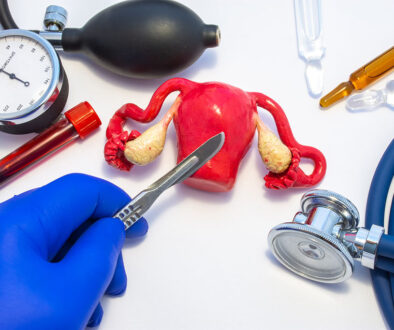Lower Abdominal Pain (Myofascial Pain): It Isn’t Always the Pelvic Organs
Chronic, persistent, or intermittent lower abdominal pain can be one of the most perplexing problems a gynecologist will deal with. The patient and her physician often focus on her pelvic organs, appendix, and bladder as the etiology of lower abdominal pain. Unless there is objective evidence by proper pelvic exam, radiologic studies, or sonography laparoscopy will often reveal nothing.
Often overlooked is the fact that the musculoskeletal structures of the abdomen can in fact be the source of the patient’s pain and only considered after an extensive set of radiologic and surgical studies are unable to determine the source of the pain. The pain arising from the muscles and fascia of the abdominal wall has been referred to by Chronic Pelvic Pain specialists as (AMPS) Abdominal Myofascial Pain Syndrome. The pain is thought to be a result of trauma (such as surgical scarring or blunt trauma), inflammation, or muscular spasm and tension. Any of these can trigger points of tension, knotting, or spasm resulting in pain in the area. In addition, these triggered pain points can result in similar responses in other muscular areas of the abdomen when the nearby musculature attempts to compensate for the original site of pain. If left unnoticed, this chronic pain can cause the central nervous system to be sensitized which results in the perception of more widespread pain.
AMPS, Abdominal Myofascial Pain, may be constant or intermittent and is usually affected by postural changes. Certain movements can exacerbate the pain and relaxation with legs flexed often helps reduce or temporarily eliminate the pain. Physical exam is extremely important in making the proper diagnosis. When a pelvic exam is done pressing on both the abdomen and pelvic organs at the same time, the source of the pain is hard to determine for the pain could be from either site. It is therefore important to examine the pelvic organs and abdomen individually. With the patient performing a partial sit up and holding the position, the abdominal muscles can be better examined and evaluated as the possible source of pain. There will be tenderness along the muscle bed eliciting the same pain and there may also be palpable knotting caused by prolonged muscular constriction.
There are numerous treatments. Anti-inflammatory medicines such as Ibupofen or Naproxen (Aleve) often work well. Heat followed by cold packs several time per day can result in marked relief of spasm. Lidocaine (Novocain) patches are available and can be placed over the area. Ultimately, injections into the area of spasm and knotting with steroids and lidocaine are very effective.



